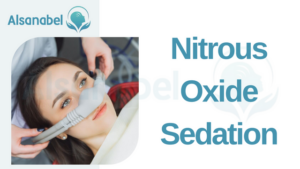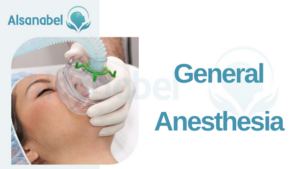Dental Sedation
For many people, visiting the dentist can be a stressful and anxiety-inducing experience. However, with the advancements in dental sedation techniques, patients now have options to help them relax and feel more comfortable during their dental procedures. Understanding the different types of dental sedation available can help patients make informed decisions about their oral health care.
Understanding the Importance of Dental Sedation
Dental sedation plays a crucial role in helping patients receive the dental care they need, especially for those who experience fear or anxiety. Here are a few reasons why dental sedation is important:
- Reducing Anxiety: Dental sedation helps calm anxious patients, allowing them to undergo dental procedures without excessive fear or stress.
- Pain Management: Sedation techniques can help manage pain and discomfort during dental procedures, ensuring patients have a more comfortable experience.
- Increase Compliance: By providing a relaxed and comfortable environment, dental sedation increases patient compliance with dental treatments, leading to better oral health outcomes.
Common Types of Dental Sedation Explained
There are several types of dental sedation available, each catering to different levels of anxiety or comfort needed. These include:
- Nitrous Oxide (Laughing Gas): Nitrous oxide is a mild sedative delivered through a mask. It helps patients feel relaxed and reduces anxiety. The effects wear off quickly, allowing patients to drive home after the procedure.
- Oral Sedation: Oral sedation involves taking medication before the dental procedure to induce a calming effect. Patients remain awake, but they are less anxious and more relaxed.
- Intravenous (IV) Sedation: This type of sedation is administered through a vein and provides a deeper level of sedation. The patient is conscious but may have little or no memory of the procedure.
It is important for individuals to consult with their dentist to determine which type of dental sedation is most suitable for their specific needs.
Read more:
Cosmetic dentistry services for the elderly
1-Nitrous Oxide Sedation
Nitrous oxide sedation, also known as laughing gas, is a popular method used in dentistry to help patients relax during dental procedures. It is a safe and effective form of sedation that has been used for many years. This article will explore how nitrous oxide sedation works and discuss its benefits and potential side effects.

Nitrous Oxide Sedation: How It Works
Nitrous oxide is a colorless and odorless gas that is mixed with oxygen and administered through a small mask that fits over the patient’s nose. The gas is inhaled by the patient, resulting in feelings of relaxation and a sense of well-being. The gas works by depressing the central nervous system, reducing anxiety and pain perception. Nitrous oxide sedation does not induce unconsciousness, and patients remain awake and responsive throughout the procedure. It is often used in combination with local anesthesia to provide optimal comfort for the patient.
Nitrous Oxide: Benefits and Side Effects
One of the main benefits of nitrous oxide sedation is its ability to help patients feel calm and relaxed during dental procedures. It is particularly useful for patients who experience dental anxiety or phobia. Nitrous oxide provides a fast-acting and reversible form of sedation, allowing patients to resume their normal activities as soon as the procedure is over. Additionally, the level of sedation can be easily adjusted to meet each patient’s individual needs.
While nitrous oxide sedation is generally considered safe, there are some potential side effects to be aware of. These can include dizziness, nausea, and headaches. However, these side effects are typically mild and go away quickly once the gas is discontinued. The use of nitrous oxide sedation is contraindicated for patients with certain medical conditions, such as chronic obstructive pulmonary disease (COPD) or pregnancy, so it is important for patients to discuss their medical history with their dentist before undergoing this type of sedation.
In conclusion, nitrous oxide sedation is a valuable tool in dentistry for promoting patient comfort and relaxation during dental procedures. When administered properly by trained dental professionals, it can provide an anxiety-free experience for patients and contribute to better overall oral health.
2- Oral Sedation
For patients who experience anxiety or fear during dental procedures, oral sedation can offer a solution. This type of sedation involves taking medication before the procedure to induce a relaxed state. The most common oral sedatives are in the form of a pill, typically a benzodiazepine such as diazepam or lorazepam. These medications are safe and effective when prescribed and administered by a qualified dentist.
The process of oral sedation begins with a consultation with the dentist. During this consultation, the dentist will evaluate the patient’s medical history, anxiety level, and the complexity of the dental procedure. Based on these factors, the dentist will determine the appropriate dosage of medication. On the day of the procedure, the patient takes the prescribed medication about an hour before arriving at the dental office. The sedative will induce a state of relaxation, reducing anxiety and making the dental experience more comfortable.
Benefits and Considerations of Oral Sedation
Oral sedation offers several benefits for patients who experience dental anxiety. Firstly, it allows patients to receive the necessary dental care without the fear and stress that can accompany dental procedures. It can also help patients with a sensitive gag reflex or those who have difficulty sitting still for long periods of time. Additionally, oral sedation provides a deeper level of relaxation compared to other types of sedation, such as nitrous oxide.
However, there are considerations to keep in mind when opting for oral sedation. The effects of the sedative can last several hours, so patients will need a trusted companion to accompany them to and from the dental office. It is also important to follow the dentist’s instructions regarding fasting before the procedure and any restrictions on eating or drinking after the sedation.
Overall, oral sedation is a valuable option for patients who experience dental anxiety or have difficulty undergoing dental procedures. It allows patients to receive the care they need comfortably and safely, improving their oral health and overall well-being.
3- Intravenous (IV) Sedation
For individuals with dental phobia or extensive dental work, intravenous (IV) sedation is a commonly used method to help them relax and feel comfortable during dental procedures. With IV sedation, medications are administered directly into a vein, providing a deeper level of sedation compared to other types of dental sedation techniques.
During an IV sedation, a small needle is inserted into a vein, typically in the arm or hand, and a sedative medication is slowly administered. The patient will become drowsy, relaxed, and may even fall asleep during the procedure. Despite being asleep, the patient can still respond to commands and is able to breathe on their own.
Advantages and Risks of IV Sedation
IV sedation offers several advantages over other types of sedation techniques. First, it provides a more profound level of sedation, making it suitable for patients with severe dental anxiety or those undergoing extensive dental work. Second, IV sedation allows for the immediate onset of the sedative effect, ensuring that the patient quickly reaches a comfortable state. Additionally, the level of sedation can be adjusted throughout the procedure to ensure optimal comfort and safety.
However, as with any medical procedure, there are certain risks associated with IV sedation. These include potential complications such as infection at the injection site, allergic reactions to the medication, and respiratory depression. It is important for the dentist and the patient to discuss any pre-existing medical conditions or medications that may affect the suitability of IV sedation.
In conclusion, IV sedation is a valuable option for individuals with dental phobia or those undergoing complex dental procedures. It provides a deeper level of sedation and allows for immediate onset, making the dental experience more comfortable and anxiety-free. However, it is crucial to consider the potential risks associated with IV sedation and consult with a dental professional to determine the most suitable sedation option for individual needs.
4- General Anesthesia
Undergoing dental procedures can be anxiety-inducing for many people. To ease their fears and ensure a comfortable experience, dentists may offer various forms of sedation, one of which is general anesthesia. This article will explore the use of general anesthesia in dentistry, when it is necessary, and the risks and benefits associated with it.

General Anesthesia in Dentistry: When It’s Necessary
General anesthesia is typically reserved for complex dental procedures or cases where the patient experiences severe dental anxiety. It is most commonly administered in hospitals or specialized dentistry centers, where a qualified anesthesiologist is present to monitor the patient throughout the procedure.
Some situations that may require general anesthesia include:
- Extensive Oral Surgery: Procedures such as wisdom tooth extraction, jaw reconstruction, or full-mouth dental implantation are complex and can be lengthy. General anesthesia ensures that the patient remains completely unconscious and pain-free throughout the procedure.
- Severe Dental Anxiety: For individuals with dental phobia or severe anxiety, general anesthesia can provide a way to receive necessary dental treatment without the associated fear and distress.
Understanding the Risks and Benefits of General Anesthesia
While general anesthesia can offer benefits in certain cases, it’s important to be aware of the potential risks involved. Some common risks associated with general anesthesia include:
- Allergic reactions
- Breathing difficulties
- Nausea and vomiting
- Medication side effects
- Temporary confusion or memory loss
However, when administered by experienced professionals in a controlled environment, these risks are generally low.
The benefits of general anesthesia include:
- Complete unconsciousness and pain relief during the procedure
- Improved patient cooperation, especially in complex cases
- Reduced anxiety and fear associated with dental procedures
If general anesthesia is deemed necessary for your dental treatment, your dentist will discuss the risks and benefits with you beforehand, ensuring that you are well-informed and comfortable with the decision.
Remember, only qualified dental professionals should administer general anesthesia, and it should only be used when necessary, with full consideration of the patient’s medical history and overall health.
Choosing the Right Dental Sedation Method for You
- Nitrous Oxide: Also known as laughing gas, nitrous oxide is a mild sedative that helps patients relax during dental treatments. It is administered through a mask and has a rapid onset and recovery time, making it a popular choice for those with mild to moderate anxiety.
- Oral Sedation: This type of sedation involves taking an oral medication prior to the dental procedure. It induces a moderate level of sedation, helping patients feel more relaxed and less aware of their surroundings. Oral sedation is suitable for patients with moderate to severe dental anxiety.
- IV Sedation: Intravenous sedation is a deeper level of sedation administered through a vein. It produces a state of deep relaxation and may cause temporary amnesia. IV sedation is typically used for more complex or invasive dental procedures.
- General Anesthesia: Reserved for extensive dental surgeries or patients with severe dental anxiety, general anesthesia induces a state of unconsciousness. It is administered by an anesthesiologist and requires careful monitoring throughout the procedure.
Frequently Asked Questions about Dental Sedation
- Is dental sedation safe?
Yes, dental sedation is safe when administered by a trained professional. Your dentist will carefully evaluate your medical history and monitor you throughout the procedure to ensure your safety. - Can I drive home after dental sedation?
Depending on the type and level of sedation used, you may need someone to drive you home after your dental procedure. It is important to follow your dentist’s instructions regarding post-sedation care. - Will I feel any pain during the procedure?Dental sedation helps manage pain and anxiety during treatment. However, if you have any concerns or experience discomfort, be sure to communicate with your dentist so adjustments can be made.
By considering these different types of dental sedation and discussing your preferences with your dentist, you can choose the method that will help you have a more comfortable and stress-free dental experience.
